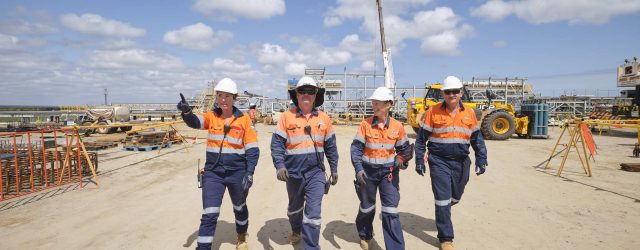Quantum leap for construction
Posted: 14th May 2024
Posted in: Blog

Posted: 14th May 2024
Posted in: Blog
Amidst the buzz of the Treasurer’s Future Made in Australia policy, a quiet hero is waiting in the wings that may not boast the glamour of quantum computing or the allure of solar panels but has the potential to be transformed by investment in manufacturing.
The Treasurer has set out five tests for government investment in domestic manufacturing capability. These tests include productivity enhancement, contribution to a net-zero future, regional development, national security and value for money. There is one industry that passes all these tests with flying colours and is a prime candidate for government support and that industry is construction.
The nation is relying on the construction industry to build the new homes, hospitals and schools needed for a growing population, the transport infrastructure to keep Australia moving, the defence infrastructure to keep our country safe and the energy infrastructure required to reach our net zero emissions commitment. However, a glaring challenge looms large: Infrastructure Australia, the nation’s independent infrastructure advisor, has sounded the alarm, declaring a shortfall of 229,000 workers within the construction sector.
This deficit in the workforce is compounded by another stark reality: the construction industry is less productive today than it was thirty years ago. With such significant challenges, it’s easy to fall into the trap of pessimism and question whether delivering the pipeline of work ahead is achievable.
The good news is, the construction industry is no stranger to overcoming complex challenges; in fact, it thrives on them. And within the government’s policy focus on Future Made lies an incredible opportunity. It’s a concept called modern methods of construction (MMC).
MMC involves constructing more of Australia’s projects in factories than on-site. This can take the form of standard components all the way through to completed project sections and modules. This form of construction is far more productive as it is standardised, takes place in controlled environments and is not subject to site-based risks such as inclement weather. It creates more opportunities for skilled workers in safer environments with increased opportunities for flexible work hours.
But wait, there’s more! Construction holds the key to unlocking Australia’s net zero ambitions. The construction industry’s heavy reliance on liquid fossil fuels for machinery and equipment constitutes a significant contributor to global emissions, amounting to 23% of the total. In 2019-20, the Australian construction industry consumed 3,250 megalitres of mineral diesel, representing nearly eight megatonnes of carbon dioxide emissions. Much of this is generated from on-site diesel-consuming plant and equipment that cannot currently be electrified. The heavy dependence on fossil fuels means global emissions targets will simply be unachievable without substantial decarbonisation of the construction industry.
Again, MMC can help. Factory based construction creates far less waste and therefore results in reduced overall energy consumption.
So why is MMC not more readily used? The investment required to set up facilities to manufacture construction components of this type is significant and the private sector will only invest if there is sufficient certainty of pipeline and volume of demand for MMC products that has simply not existed to date.
Herein lies the opportunity for government support. By optimising project designs for manufacture and assembly and by standardising components of schools, hospitals, metro stations, bridges and other types of infrastructure across jurisdictions, a viable market will be created to support private sector investment in MMC manufacturing facilities. This investment could be accelerated by matched investment from State and Federal governments and by underwriting demand in the short term.
Given the scale of operations required to maximise efficiency, MMC manufacturing facilities would ideally be located in regional areas between major population centres thus providing secure skilled employment opportunities in areas that need them the most.
The return on such investment would be huge. If we could close the gap in productivity growth over the last thirty years between construction and other industries (notably manufacturing) the economy would be a staggering $56 billion better off every year! That’s enough to fund the NDIS with enough money left over to pay for an additional school and hospital in every State and Territory.
So, whilst construction is not as sexy as quantum computers and solar panels, investment in the construction industry could provide a much-needed quantum leap for an industry that has been doggedly stuck in the past and power a transition to a more diverse and sustainable sector able to build the infrastructure the country needs, when it needs it and for a price it can afford.